#National Poultry Day
Explore tagged Tumblr posts
Text






























National Poultry Day
We suspected fowl play when we first discovered March 19 is annual National Poultry Day when we celebrate our national love affair with poultry. We scrambled to figure out how to celebrate poultry without bias because we are biased; chickens rule the roost when it comes to poultry. We are just going to have to wing this one.
History of National Poultry Day
Chicken is the most widely consumed meat in America, with each of us estimated to eat a clucking 101 pounds per year. Chicken has become our favorite protein because it is affordable (should we say “cheep-er”?) readily available, easy to cook, and versatile. But chickens were not always prized for how well they pair with an endless variety of seasonings, flavors, and cooking methods.
The word poultry is derived from the Latin word “pullus” which means “small animal.” Today we use the word poultry to describe domesticated birds kept for meat, eggs, and possibly feathers. But the first fowls intentionally raised by humans are believed to have been kept for their entertainment value, not for their spicy wings. Archeological evidence points to Southeast Asia and China as the first cultures to breed chickens for the sport of cockfighting as early as 10,000 years ago. Artistic depictions of roosters engaged in combat are found throughout the ruins of many ancient cultures.
Until recently the earliest evidence of large-scale chicken-eating was in first century B.C. Europe. But researchers have unearthed what may be evidence of chickens being domesticated for food at least 100 years earlier in an ancient Israeli city. We may never know when or how someone first tasted chicken roasted over a fire, but obviously that first barbequed chicken was not the last.
Outside the fighting rings and amphitheaters of ancient Rome, Greece, China, and Asia, chickens have held status as divinity in human societies for millennia. Chickens have been worshipped in many parts of the world because of their fighting prowess and are still considered to hold magical powers of divination in remote cultures.
Although some people around the world still engage in cockfighting legally and illegally, the world’s oldest continual sport has been illegal in all fifty of the United States since 2008. That makes us feel good because we think cockfighting is inhumane, plus our fine feathered friend the chicken is now a superstar in the scientific arena. The chicken was the first domesticated animal and first bird to have its genome completely mapped by geneticists in 2004. It turns out that the chicken is the first descendant of dinosaurs. Who knew? We wonder if a cockfight between two prehistoric roostasaurusrex would have been considered fowl play or pure poultry in motion. We are just glad modern chickens are pullus – small animals.
On National Poultry Day we celebrate chickens and other poultry not just for their culinary value, but for their other lesser-known contribution to mankind as pets. Chickens make wonderful pets, whether common laying hens or exotic heritage breeds that are as colorful as tropical fish and cost as much as $399 for a single day-old chick. Chickens make good mousers, some say better than cats, and will keep your vegetable garden fertilized and insect-free.
We realize that by winging it, we managed to duck the fact that poultry is more than just chickens. We will give it another crack and fry harder next year to include other fowl in our tribute on National Poultry Day.
National Poultry Day timeline
1992
More chicken, please!
American chicken consumption surpasses beef for the first time.
1928
Discovery of Vitamin D
Vitamin D supplements increase the winter survival rate of flocks, revolutionizing the chicken meat and egg industries.
1923
Chickens gain industry status
The first confined housing of birds for meat in Delaware and the introduction of cage systems for hens in California became catalysts for poultry farming’s shift from small family enterprise to the industrial age.
1800s
Chickens raised only on family farms
Chicken meat was a delicacy and eggs were considered a luxury until the 1900s because flocks failed to thrive due to poor nutrition and Vitamin D deficiency during winter months due to lack of sunlight.
National Poultry Day FAQs
What is considered poultry?
“Poultry” is generally defined as domesticated birds raised for the production of meat, eggs and can include feathers. The word “poultry” also refers to the flesh of these birds when used as food. Most people think of chicken or turkey when they hear the word poultry, but geese, ducks, squab (young pigeons) pheasant, quail, guinea fowl, and ostrich are also poultry.
What are the personality characteristics of poultry?
All poultry are social animals who enjoy being with other birds and thus should never be kept alone in captivity. They have a clearly defined hierarchy, or pecking order, within their community with strong territorial instincts. Poultry will nest in the same spot every night to go to sleep if given the option.
When is National Poultry Day?
March 19
How to Celebrate National Poultry Day
Try a bird of a different feather: Pheasant, duck, quail, goose, and game hens are all poultry not often found on American dinner plates but popular in other cultures. If these are too exotic for your taste at least treat your palate to a capon. A capon is a rooster that is castrated before sexual maturity. The lack of testosterone and a special diet produces exceptionally tender, juicy, and flavorful meat that is superb compared to regular hens. Capons were considered a luxury and the poultry of choice for holiday feasting among wealthy families during the early nineteenth century. Capons are not easy to find these days, but once you taste this bird, you will never again say anything else “tastes like chicken.”
Roast a Turducken: If you are undecided which poultry to serve for dinner on National Poultry Day, go with a Turducken. Turducken is a deboned chicken stuffed into a deboned duck that is stuffed into a deboned turkey, then roasted for pretty much a full day. The famous Cajun chef Paul Prudhomme trademarked the name Turducken in 1986, although the practice of “engastration” (the cooking term for stuffing one animal with another) dates back to at least the Middle Ages.
Purchase farm-fresh eggs: If you do not have your own backyard flock of laying hens, take a drive outside the city limits to a local co-op or family farm and purchase a dozen farm-fresh eggs. Once you taste the difference between freshly laid eggs and supermarket eggs, you will never want to buy store-bought again.
5 Ways Poultry Feathers Have Been Recycled
Quill pens: Before modern pens were invented, feather quills were trimmed at a slant with a razor and dipped in ink for use as writing instruments.
Fire tinder: Bird feathers are very flammable when dry and can be used as tinder to get a campfire going quickly with just a small spark.
Fishing lures: The decorative plumage of birds has been used by fly fishermen and women for years to tie the perfect lure for landing prized trophy fish like mackerel, bass, and trout.
Goose down bedding: Goose down is soft, fluffy and warm, and has become the most desirable stuffing for extremely comfortable – and expensive – pillows and comforters.
Decorative paper: Since 1993 feathers have been used to make exquisite decorative papers.
Why We Love National Poultry Day
Chickens make great pets: If you are not a meat-eater, the next best thing about chickens is they make surprisingly good pets. Chickens are social creatures that love to strut around to see what the rest of the flock is up to. They enjoy being held and can even be taught a few tricks provided there is a delicious mealworm reward involved. Chickens are relatively inexpensive and easy to care for compared to other domestic pets but need at least two or three other birds around to be well-adjusted. If your community does not discriminate against poultry as pets, and you have room for a spacious coop, laying hens will pay for their upkeep in daily fresh eggs.
For beauty’s sake: Hens take special notice of the rooster with a colorful, nice-looking, healthy comb strutting his stuff around the barnyard. A healthy crown and wattle are indeed very good for the rooster looking to score in the barnyard. A stunning comb and wattle are good for us, too, because chicken combs, especially rooster combs, are an excellent source of Hyaluronic acid, or H/A, a naturally occurring body fluid that lubricates and cushions bone joints and plumps up skin cells. H/A has been used for decades to relieve arthritis joint pain and stimulate healing of athletic injuries. H/A has been injected into the knees of professional and collegiate athletes and racehorses for years as a bio-lubricant that allows bones to move easier. Hyaluronic Acid can also be taken orally as a supplement and is a sought-after ingredient in top-shelf cosmetics and natural skincare products.
Chicken jokes: Chicken jokes are a childhood tradition, a quirky rite of passage discovered sometime between kindergarten and first grade. We are not sure why other poultry have not been singled out as the subject of silly jokes and puns. Maybe chickens do not get their feathers ruffled as easily as other poultry over fowl jokes. We egg-spect it has something to do with a chicken being in just about every pot in America, or at least on the grill or in the oven.
Source
#Fried Chicken#Garlic Parmesan Chicken#Spicy Caramel Chicken Taco#Spicy Cashew Chicken#Tropical Chicken Pizza#Lemongrass Chicken Bowl#Honey Pepper Chicken#Crispy Chicken Burger#Bourbon BBQ Chicken Pizza#Chicken Vandoloo#Parmesan Chicken with mushroom risotto#Jerk Chicken with Sweet Potatoes and Carrots#BBQ Korean Bowl with sesame#National Poultry Day#NationalPoultryDay#19 March#food#restaurant#original photography#travel#summer vacation#Silkie#Louisiana Chicken Pasta#Fried Chicken Sandwich#Canada Goose#homemade stuffed turkey#Brahma chicken#vacation#USA#Canada
2 notes
·
View notes
Text
03/19/2024 is Client's Day 🌎, World Social Work Day 🌎, National Certified Nurses Day 🇺🇸, National Chocolate Caramel Day 🇺🇸, National Let's Laugh Day 🤣🇺🇸, National Poultry Day 🐔🇺🇸, Train It Chooseday 🚂🇬🇧

#client's day#world social work day#national certified nurses day#national chocolate caramel day#national let's laugh day#national poultry day#train it chooseday
3 notes
·
View notes
Text
Celebration of the Rooster
Well, it’s National Poultry Day, and I’m getting mighty sick of talk of the price of eggs, so I thought I’d skip the hens and give a shout-out to the place of roosters in pop culture. Chickens were originally domesticated in Asia about 8,000 years ago, adapted from various breeds of wild junglefowl. They first came to Europe around 800 B.C. The blood sport of cockfighting also originated in…

View On WordPress
#blues#cartoon#cockfighting#corn flakes#culture#Foghorn Leghorn#history#Little Red Rooster#National Poultry Day#Red Rooster#Rock-a-Doodle#rooster#roosters#song
1 note
·
View note
Text



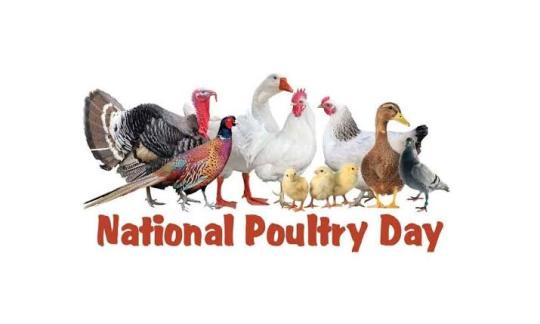
Today is 19th of March.
Today is World Social Work Day, National Stretch Mark Day, National Chocolate Caramel Day, National Poultry Day.
#world social work day#national stretch mark day#national chocolate caramel day#national poultry day
0 notes
Text

I’ve just been informed that today is #NationalSnuggleAChickenDay. There really is a day for everything isn't there? 😉
Marevna (Marie Vorobieff) (Russian, 1892-1984) Peasant Woman with Chicken, 1948 Oil on canvas, 73.5 x 54 cm
#animals in art#animal holiday#20th century art#european art#painting#oil painting#cubism#women artists#Russian art#Marevna#1940s#modern art#Marie Vorobieff#chicken#poultry#livestock#domesticated animals#Snuggle A Chicken Day#National Snuggle A Chicken Day
14 notes
·
View notes
Text

The 'BEST' Scouse recipe | National Museums Liverpool
0 notes
Text
February 2025 Witch Guide
New Moon: February 27th
First Quarter: Feb 5th
Full moon: February 12th
Last Quarter: February 20th
Sabbats: Imbolc- February 1st
February Ice Moon
Also known as: Cleansing Moon, Deep Snow Moon(Mahican), Eagle Moon(Cree), Bear Moon(Ojibwe), Black Bear Moon(Tlingit), Bony Moon(Cherokee), First Flowers Moon(Catawba), Goose Moon(Haida), Groundhog Moon(Algonquin), Hungry Moon(Cherokee), Ice Moon, Midwinter Moon(Oneida), Raccoon Moon(Dakota), Sleet Moon(Comanche), Solmonath, Suckerfish Moon (Ojibwe) & Quickening Moon
Element: Fire
Zodiac: Aquarius & Pisces
Nature spirts: House Faeries
Deities: Aphrodite, Brigid, Demeter, Diana, Juno, Kuan-Yin, Mars & Persephone
Animals: Otter
Magical: Unicorn
Birds: Chickadee & Eagle
Trees: Cedar, laurel, myrtle & rowan
Herbs: Balm of Gilead, hyssop, myrrh, sage & spikenard
Flowers: Primrose
Scents: Heliotrope & wisteria
Stones: Amethyst, jasper, moonstone, obsidian, onyx, pearl, rose quartz, red zircon &topaz
Issues, intentions & powers: Astral travel, banishing, beginnings, empowerment, fertility & purification
Energy: Breaking bad habits, creative expressiveness, energy working to the surface, forgiveness, freedom, friendships, future plans, growth, healing, problem solving, purification, responsibility & science
The explanation behind February’s full Moon name is commonly known as the Snow Moon. This is due to the typically heavy snowfall that occurs in February. On average depending on location & climate conditions, February can be one of the snowiest months of the year according to data from the National Weather Service.
• In the 1760s, Captain Jonathan Carver, who had visited with the Naudowessie (Dakota), wrote that the name used for this period was the Snow Moon, “because more snow commonly falls during this month than any other in the winter.”
Imbolc
Known as: Brigid’s day, Feast of Torches, Feast of Waxing Light & Oimelc
Season: Winter
Element: Air
Symbols: Besoms, Brigid’s cross, candles, candle wheels, corn dolls, cauldrons, fire, ploughs, priapic wands & white flowers
Colors: Black, brown, green, lavender, orange, pink, red, white & yellow
Oils/Incense: Apricot, basil, bay, carnation, chamomile, cedar, cinnamon, dragon's blood, frankincense, heather, jasmine, myrrh, neroli, peppermint, red sandalwood, sage(green), styrax, vanilla, violet & wisteria
Animals: Badger, cow, deer, groundhog, sheep & snake
Birds: Lark, robin & swan
Stones: Amethyst, bloodstone, ×citrine, clear quartz, garnet, green tourmaline, hematite, iron, lodestone, onyx, red zircon, rose quartz, ruby, turquoise & yellow tourmaline
Mythical: Dragon
Food: Ale, breads, chives, cider, cornmeal, curry, dairy products, dried fruit, dried meats, eggs, garlic, grains, herbal teas, honey cakes, lamb, mead, muffins, nuts, onions, peppers, poppy seed cakes, pork, potatoes, poultry, pumpkin seeds, raisins, scones, spiced wine & sunflower seeds
Herbs/Plants: Angelica, ashleaf, balsam, basil, bay, benzoin, blackberry, celandine, clover, coltsfoot, coriander, dragon's blood, garlic, lemon, myrrh, reed, rosemary, sage, vervain, wheat, witch hazel & wormwood
Flowers: Chamomile, crocus, daffodil, heather, iris, rose hips, sunflower, tansy & violet
Trees: Blackthorn, cedar, rowan & sycamore
Goddesses: Anu, Aradia, Arianrhod, Artio, Athena, Branwen, Brigid, Danu, Februa, Gaia, Inanna, Juno, Selene, Selu, Sirona & Vesta
Gods: Aengus Mac Og, Bragi, Cupid, Dian Cecht, Dumuzi, Eros, Februus & Pax
Tarot cards: Death, The Empress & The Star
Spellwork: Air magick, cleansing, divination, fertility & new beginnings
Issues, Intentions & Powers: Awakening, animals, banishing, beginnings, change, fertility, healing, hope, illumination, inspiration, light, patience, pregnancy/childbirth, prophecy, prosperity, purification, transformation, well-being & youth
Activities:
•Make & light white candles
• Clean/decorate your altar & consecrate your altar tools
• Go on a walk in nature & look for signs of spring
• Make a Brigid’s Cross
• Have a feast with your family/friends
• Give thanks & leave offerings to the Earth
• Set intentions, reflect & look deeper into your goals for spring
• Start a bonfire
• Bless new projects
• Clear snow/ice from public walkways
• Gather & distribute warm clothes, hand warmers & blankets to those who need it
• Pepare plans for your upcoming garden
• Craft a priapic wand
• Spend time with children celebrating Imbolc by making crafts & or baking
• Make or buy new magical tools
• Practice divination & fire scrying
• Draw a cleansing ritual bath for yourself
• Meditate, reflect & say your farewells to winter
• Cleanse & clean your house to prepare for spring
• Create a Brídeóg: a doll of Brigid made of straw
• Make Bride’s bouquet satchets & exchange as symbols of good luck and fertility
• Set aside seasonal food & or drinks as an offering to Brigid to invite her in your home
• Find Imboloc prayers & devotionals that bid farewell to the winter months & honor the goddess Brigid
Imbolc is a Gaelic festival marking the beginning of spring. Most commonly it is held on January 31 – February 1, or halfway between the winter solstice & the spring equinox. The holiday is a festival of the hearth, home, a celebration of the lengthening days & the early signs of spring.
• It is suggested that Imbolc originally marked the onset of the arrival of fresh sheep milk after a period of food shortage & the beginning of preparations for the spring sowing.
The word “imbolc” means “in the belly” and refers to the pregnancy of ewes at this time of year. The term “oimelc” means ewe’s milk. Around this time of year, many herd animals give birth to their first offspring of the year or are heavily pregnant & as a result, they are producing milk.
Imbolc is mentioned in some of the earliest Irish literature and it is associated with important events in Irish mythology. It is believed that Imbolc was originally a pagan festival associated with the lambing season and the goddess Brigid. It's believed that Imbolc was Christianized as a festival of Saint Brigid, who herself is thought to also be a Christianization of the goddess.
• Joseph Vendryes and Christian-Joseph Guyonvarc'h suggested that it may have also been a purification festival, similar to the ancient Roman festival Lupercalia which took place at the same time of year.
Some scholars argue that the date of Imbolc was significant in Ireland since the Neolithic. A few passage tombs in Ireland are aligned with the sunrise around the times of Imbolc & Samhain.
Related festivals:
•Groundhog Day: February 2nd-
Is a tradition observed in the United States & Canada every year. It derives from the Pennsylvania Dutch superstition that if a groundhog emerges from its burrow on this day & sees its shadow, it will retreat to its den & winter will go on for six more weeks; if it does not see its shadow, spring will arrive early.
• While the tradition remains popular in the 21st century, studies have found no consistent association between a groundhog seeing its shadow & the subsequent arrival time of spring-like weather.
•St. Brigid’s Day: February 1st-
Celebrates the beginning of spring and the celebration of Lá Fhéile Bríde, St Brigid’s Day. The day has long symbolised hope, renewal and the feminine.
•Because Saint Brigid has been theorised as linked to the goddess Brigid, some associate the festival of Imbolc with the goddess.
St. Brigid is the patroness saint (or ‘mother saint’) of Ireland. She is patroness of many things, including poetry, learning, healing, protection, blacksmithing, livestock & dairy production. In her honour, a perpetual fire was kept burning at Kildare for centuries & a recent campaign successfully established her feast day as a national holiday in 2023.
The customs of St Brigid's Day did not begin to be recorded in detail until the early modern era. In recent centuries, its traditions have included weaving Brigid's crosses, hung over doors and windows to protect against fire, illness, and evil spirits. People also made a doll of Brigid (a Brídeóg), which was paraded around the community by girls, sometimes accompanied by 'strawboys'. Brigid was said to visit one's home on St Brigid's Eve. To receive her blessings, people would make a bed for Brigid, leave her food and drink, and set items of clothing outside for her to bless. Holy wells would be visited, a special meal would be had, and the day was traditionally linked with weather lore.
• Candlemas: February 2nd-
Is a Christian feast day on February 2nd commemorating the presentation of Jesus at the Temple. It is based upon the account of the presentation of Jesus in Luke 2:22-40.
•While it is customary for Christians in some countries to remove their Christmas decorations on Twelfth Night, those in other Christian countries historically remove them after Candlemas.
On Candlemas, many Christians also take their candles to their local church, where they are blessed and then used for the rest of the year. For Christians, these blessed candles serve as a symbol of Jesus Christ, who is referred to as the Light of the World.
•Setsubun: February 2nd-
Is the day before the beginning of spring in the old calendar in Japan. The name literally means 'seasonal division’, referring to the day just before the first day of spring.
Both Setsubun & Risshun are celebrated yearly as part of the Spring Festival (Haru matsuri ) in Japan. In its association with the Lunar New Year, Setsubun, though not the official New Year, was thought of as similar in its ritual & cultural associations of 'cleansing’ the previous year as the beginning of the new season of spring. Setsubun was accompanied by a number of rituals & traditions held at various levels to drive away the previous year’s bad fortunes & evil spirits for the year to come.
• The commonly practiced tradition of throwing of roasted soybeans (called "fukumame") in order to drive away evil spirits & bring good fortune into one's home is upheld by both places of worship & regular people. Then, as part of bringing luck in, it is customary to eat roasted soybeans, one for each year of one's life (kazoedoshi), plus one more for bringing good luck for the year.
Other celebrations:
• Lupercalia: February 13-15th-
In ancient Rome, this festival was conducted annually on February 13th through 15th under the superintendence of a corporation of priests called Luperci. The origins of the festival are obscure, although the likely derivation of its name from lupus (Latin: “wolf”) has variously suggested connection with an ancient deity who protected herds from wolves & with the legendary she-wolf who nursed Romulus & Remus. As a fertility rite, the festival is also associated with the god Faunus to purify the city, promoting health & fertility.
Each Lupercalia began with the sacrifice by the Luperci of goats & a dog, after which two of the Luperci were led to the altar, their foreheads were touched with a bloody knife & the blood was wiped off with wool dipped in milk; the ritual required that the two young men laugh. The sacrificial feast followed, after which the Luperci cut thongs from the skins of the sacrificial animals & ran in two bands around the Palatine hill, striking with the thongs at any woman who came near them. A blow from the thong was supposed to render a woman fertile.
In 494 CE the Christian church under Pope Gelasius I forbade participation in the festival. Tradition holds that he appropriated the form of the rite as the Feast of the Purification (Candlemas), celebrated on February 2, but it is likely that the Christian feast was established in the previous century. It has also been alternately suggested that Pope Gelasius I replaced Lupercalia with St. Valentine’s Day, celebrated on February 14th, but the origin of that holiday was likely much later.
Sources:
Farmersalmanac .com
Llewellyn's Complete Book of Correspondences by Sandra Kines
Wikipedia
Encyclopedia Britannica
A Witch's Book of Correspondences by Viktorija Briggs
Encyclopedia britannica
Llewellyn 2025 magical almanac Practical magic for everyday living
Llewellyn's Sabbat Essentials: Imbolc
Note:
This guide was written with Moon phases and dates corresponding to North America. These guides are supposed to be a generalized stepping off point to do your own research & help celebrate the way you feel called to.
•THIS IS CONDENSED INFORMATION AND SPECIFICS MAY NOT BE MENTIONED
This isn't based off what I do personally & I'm by no way suggesting people celebrate a certain way. It's stuff I've read & put together from books so people of different traditions & practices can get an idea of what to do for the sabbat, months or research for themselves.
Note that for Native American names, each Moon name was traditionally applied to the entire lunar month in which it occurred, the month starting either with the new Moon or full Moon. Also the name of the lunar month might vary each year or between bands or other groups within the same nation.
Some names listed here may reflect usage at once in history but may no longer be used by a designated group today. Many of the names listed here are English interpretations of the words used in Native American languages. They are only roughly aligned here with the months of the Gregorian calendar; you’ll notice that some names are repeated in multiple months.
The ones listed are the ones that were used in the books I used for correspondences & there are many more that are not mentioned.
#imbolc#wheel of the year#sabbat#February#February 2025#witch guide#snow moon#witchblr#wiccablr#paganblr#witch community#witches of tumblr#tumblr witches#witchcraft#grimoire#book of shadows#witch tips#beginner witch#baby witch#witchcore#spellbook#brigid#witch#traditional witchcraft#GreenWitchcrafts#occult#spiritual#witchy stuff#witchy things
178 notes
·
View notes
Note
saw the sandwich post. i've worked at 2 different big chains in 3 different cities and you have no idea how correct you are. it's ubiquitous. i don't know what it is about poultry that is feminine but it is deemed so which makes you gay if uou order turkey i guess.
i consider myself an expert in sandwich gender science and i still don't know where tuna salad lies on the spectrum. i hesitate even to speculate.
I received this a while ago (sorry, I need to make a post about how September and October regularly murder my ability to socialize) but I've been thinking about the tuna salad question ever since. I've put it to several people I know who are familiar with the sando gender spectrum and got wildly divergent categorizations and theories.
I'm inclined to think that because it has the word "salad" in it, it's automatically gendered towards the femme end of the spectrum, but among the specific subset of Dudes Who Have Sandwich Gender Issues I also know that tuna fishing is considered quite macho because tuna are large fish, and tuna salad is primarily meat and mayo, which as we have discussed is (outside of barbecue sauce, testing pending) the most masculine of condiments.
As an aside, I had a number of people question my thesis that mayo is seen as more masculine than mustard, and my only explanation for this is that a) American mustard isn't that spicy, negating the machismo of eating something painful, and b) mustard is considered European and therefore effeminate. As a man who used to run a blog about mustard, I understand this sentiment may draw ire.
In any case, it does appear that tuna salad is a floating question mark. We're unlikely to ever serve it at the food tent -- we didn't even serve sandwiches with mayo on them this year because we were worried about food poisoning, and when you throw fish into the mix it just becomes more perilous. I leave it to the brave beings who run the delis and sandwich shops across this great nation of ours to continue to engage in the dangerous business of santhropology in the hopes one day our findings might be of value to the world.
226 notes
·
View notes
Text
asileverse!AU: MANY silly (or sad) information about characters
Adam knows all his exorcists by name and date of first death
Eve gets annoyed when the fruit of knowledge of good and evil is confidently called "an apple" (seriously, NEVER call the fruit of knowledge like this when Eve is near)
Lute isn't frowning, she just has a default face like this
when Emily grows up, she'll be VERY lanky
Sera is aloof from adult people, but patronizes pregnant women because she's had affairs in the past that resulted in babies
Lilith doesn't mind being called a bad mother, and is even a little proud of it
Lucifer regularly forgets Charlie's real name (Charnett, dad!) and calls her Charlotte; sinners have the same problem
Asmodeus is actually on quite friendly terms with stepfather, Lucifer is the only one among the Sins to whom he listens attentively
Beelzebub has no control over the cannibalistic subspecies of the local inhabitants, — for them it's not satiety, but normal order of things
Mammon likes to hang out at noisy parties in his castle (I beg you, he likes to show off)
Fizzarolli sometimes secretly frees prisoners from dungeons
Satan is lowkey sympathetic to Jesus Christ
Belphegor doesn't care, whether he's addressed as "Lord" or "Lady"
If Seviathan could rewind time, he'd marry Charlie, purely out of curiosity
Helsa doesn't really dislike her brother's ex-fiancée, she just likes to piss her off
Baxter avoids women (he was married... twice)
Katie Killjoy secretly likes it when Tom carries her on back because of her paralysis: it reminds Katie of childhood and how dad used to carry her
Tom Trench's face is badly distorted under the mask, only his eyes are... relatively normal
widowed Mimzy during the war, to support herself and little son, worked in a poultry farm; that's when parents and sisters started affectionately referring to her as "our brood-hen"
Arackniss was the most educated of three children in the family and was deeply interested in Greek mythology
Molly doesn't want Antonio to know she's already dead (she died after him): she's afraid it will hurt brother
Vox secretly hopes to one day meet sons in the afterlife and hug them again, — deep down he would trade this world to see his sons and wife
Valentino once went to the temple of Eisheth Zenunim, hoping to find the lover who had died in his arms after abortion (Eisheth takes former prostitutes under patronage); he wasn't let in
Velvette has a revolver with a bullet made of consecrated steel stashed for her ex-boyfriend who shot her
Zestial sleeps upside down in a bat-like manner
Rosie's white hair isn't an age-related change, she was born with this (anticipating further questions: Rosie's white only on head >:D)
Carmilla Carmine touches the scar across her face when she's worried or thinking
Flaming Skull Guy is warm to French sinners because his tribe allied with colonists of that nationality
Odette prefers women, and one of her crushes, but (sadly?) unrequited, is Velvette
Clara was very feminine when she was alive; she started wearing pants and cuirass in Eden, imitating the exorcists
#hazbin hotel#hazbin hotel: asileverse au#hazbin hotel au#asileverse#hazbin hotel adam#hazbin hotel eve#hazbin hotel lute#hazbin hotel emily#hazbin hotel sera#hazbin hotel lilith#hazbin hotel lucifer#hazbin hotel seviathan#hazbin hotel helsa#hazbin hotel baxter#hazbin hotel katie killjoy#hazbin hotel tom trench#hazbin hotel mimzy#hazbin hotel arackniss#hazbin hotel molly#hazbin hotel vox#hazbin hotel valentino#hazbin hotel velvette#hazbin hotel zestial#hazbin hotel rosie#hazbin hotel carmilla#hazbin hotel odette#hazbin hotel clara#hazbin hotel flaming skull guy#hazbin hotel sins
53 notes
·
View notes
Text
By combining food-bearing trees and shrubs with poultry production, Haslett-Marroquin and his peers are practicing what is known as agroforestry — an ancient practice that intertwines annual and perennial agriculture. Other forms include alley cropping, in which annual crops including grains, legumes, and vegetables grow between rows of food-bearing trees, and silvopasture, which features cattle munching grass between the rows. Agroforestry was largely abandoned in the United States after the nation’s westward expansion in the 19th century. In the 2022 Agricultural Census, just 1.7 percent of U.S. farmers reported integrating trees into crop and livestock operations. But it’s widely practiced across the globe, particularly in Southeast Asia and Central and South America. According to the U.N. Food and Agriculture Organization, 43 percent of all agricultural land globally includes agroforestry features. Bringing trees to the region now known as the Corn Belt, known for its industrial-scale agriculture and largely devoid of perennial crops, might seem like the height of folly. On closer inspection, however, agroforestry systems like Haslett-Marroquin’s might be a crucial strategy for both preserving and revitalizing one of the globe’s most important farming regions. And while the corn-soybean duopoly that holds sway in the U.S. heartland produces mainly feed for livestock and ethanol, agroforestry can deliver a broader variety of nutrient-dense foods, like nuts and fruit, even as it diversifies farmer income away from the volatile global livestock-feed market.
[...]
Trees actually have a much longer and more robust history in the Midwestern landscape than do annual crops. Think of the Midwestern countryside before U.S. settlers arrived, and you might picture lush grasses and flowers swaying in the wind. That vision is largely accurate, but it’s incomplete. Amid the tall-grass prairies and wetlands, oak trees once dotted landscapes from the shores of Lake Michigan through swathes of present-day Indiana, Illinois, Iowa, and Missouri, clear down to the Mexican border. These trees didn’t clump together in dense forests with closed canopies but rather in what ecologists call savannas — patches of grassland interspersed with oaks. Within these oak savannas, which were interlaced with prairies, tree crowns covered between 10 percent and 30 percent of the ground. They were essentially a transition between the tight deciduous forests of the East and the fully open grasslands further west. And in the region where Haslett-Marroquin farms — part of the so-called Driftless Area, which was never glaciated — trees proliferated even more intensely. In pre-settlement times, according to a 2014 analysis coauthored by Iowa State University ecologist Lisa Schulte Moore, closed-canopy forests of oaks, sugar maples, and other species covered 15.3 percent of the area, and woodlands (low-density forests) took up another 8.6 percent. Prairies — the ecosystem we readily imagine — composed just 6.9 percent. Oak savannas made up the rest.
10 September 2024
99 notes
·
View notes
Text
Preview...
"A Tattoo and the Bloodsucker Blues"
(A Terry Richmond Vampire AU Fic)



Summary:
You thought the tattoo on his arm marked him as one of those Hoteps or Nation of Islam brothas that hawked bean pies on the corner with the Final Call. But little did you know it meant more than that. That's why you have to track him down and kill him... before the baby in your belly can turn into his kind.
(This fic will strictly be for the grown and sexy. Smut, Violence, Blood. Dropping October 30th at Midnight on All Hallow's Eve.)
“I don’t wanna wait for love
Every time I do
I don’t wanna wait for love
Waitin’ on him
Are you warm enough?
Coco blood
Are you warm enough?
Coco blood”
Celeste – “Coco Blood”
Celeste Profitt checked the GPS on her smartphone one more time before stepping out of her gun metal gray Dodge Charger.
She drove out to find the pale green double shotgun house, which was sequestered on the outskirts of St. Celestine Parish. Ten years previously, there had been flooding in the county her grandmother named Celeste after, and many families left the area when their insurance wouldn’t pay for water damage. The houses left behind looked like gaps in the teeth of someone with infected gums. It reeked of working class poverty, the kind of poverty Celeste ferociously clawed her way out of by holding down two jobs. One at the poultry factory, where she removed the putrid raw entrails of slaughtered chickens, and the other at a nursing home, where she cleaned shitty bed pans and kept company with neglected elders with no kinfolk nearby.
The shotgun houses left standing weren’t different from the Creole cottage she rented less than seven miles away, and she cut her eyes back to the one she needed. Damp air with the hint of rain coming caused her to sniffle. It smelled old around there, and something had definitely died in some bushes across the street. She zipped up her dark blue windbreaker and fingered the pepper spray she carried in the jacket’s pocket. Couldn’t be too careful around folks who chose to stay in a bad situation. It still smelled like floodwater and deep regrets.
She pulled a cigarette from her purse, but stuffed it back down to the bottom, reminding herself that she was pregnant now and couldn’t hurt the baby that rested in her womb. The urge to puff daily was a struggle, and she refused to toss a ten-dollar pack of nicotine in the garbage. Shit, she might sell a few loosies if she needed to. Her funds were getting low paying for all the high-priced gas she burned through looking for her baby daddy.
Terry Richmond.
That’s what he called himself, but now she wasn’t too sure if that was his real name or not since she couldn’t find his ass anymore once she decided to keep their baby. She closed her eyes and drew in a deep breath. She needed to stay calm and not think about the hurt and hate she carried in her heart for that man. Never trust a pretty boy with pretty eyes and a third leg. That should’ve been her motto from jump. But that was neither here nor there with the position she found herself in at the moment. Right now she needed some answers and the woman inside the pale green shotgun house was supposed to have the solution.
She fingered a plastic grocery bag she also carried in her purse. Inside it was a blood plasma bag she toted around every day that she fed from when the urge overtook her on some days. The cravings for blood grew worse, and the fetus inside her stayed absorbing every nutrient from her body. What it wanted most lately was the blood in her purse. The baby inherited fifty-fifty of its parent’s genes, and back when she thought things were cool between them, all lovey-dovey and real passionate in those early days…well, Celeste imagined their baby inheriting Terry’s pretty eyes and her thick wondrous hair. He was lighter than her and she figured the baby would come out a gorgeous brown that was a mix of their two different skin tones. The last thing she wanted was for her child to come out with Terry’s hunger.
For blood.
Celeste zipped her purse back up and concentrated on what she was there to do.
Talk to the Black witch of St. Celestine Parish.
The renowned Voodoo priestess down in Nawlins last weekend was a grand failure at solving her problem. That lady's Catholic ass made the sign of the cross several times throughout Celeste’s consultation, which was a bit much for her taste. Celeste grew up Catholic too, but found it irritating that a Voodoo priestess acted so scary about a bloodsucker, while also bragging about turning people who were made into zombies back into human beings. At least that’s what she claimed on her website. That phony bitch started whimpering and calling for Jesus when Celeste pulled back her shirt and lifted her bra to show the fang marks on her titties that Terry made that never healed properly. She explained how she became allergic to her silver jewelry, and fought with a three-inch bundle of developing cells over blood intake from the plasma bag.
She left the fake Madame Zeroni’s Curio shop disgusted and a hundred dollars broker.
Her homegirl Mercy texted the name of a woman who quietly practiced Hoodoo on her phone. Mercy believed everything Celeste told her because she had been there from jump, and without judgment, guided her to another root of the African diaspora tree.
Celeste lifted her foot onto the first creaky step of the shotgun house and the front door on the left opened. Behind the screen door she made out the face of a man with the skin-color of dark tobacco leaves.
“Yeah?” he said in a gruff tone.
Celeste glanced at the door on the right, which was her destination. She ignored the man and knocked on the glass window on the upper half of the wooden door. The neighbor opened his screen and stepped out.
“You sure you here to see her?” the man asked.
Without a screen barrier, his face looked younger and more handsome, his short locs pointing every which-way on his head like tiny black antennas. The front door on the right opened and a pretty, dark brown-skinned woman stuck her head out.
“Mind ya business, Bertrand. She ain’t here to see you.”
“Lynn?” Celeste asked.
“It’s me,” Lynn said.
She opened her door wider and glanced back at her neighbor.
“Come on inside before anymore noisy birds stick they heads out,” Lynn said.
Celeste stepped over the threshold and passed Lynn to get inside.
“Good Lord, gal, you got a head full of hair on you! How long you been growing it?”
Celeste touched her heavy and long bongo locs that fell down to her waist.
“Ten years now. Since I was a teenager.”
“So thick and pretty. Betcha when you go swimming it’s like fighting with an octopus, huh?”
Celeste grinned.
Lynn was much younger than she expected. Late twenties, maybe early thirties. Out in the parish swamps, there was no telling how old melanated folks could be.
“Come on back here into my kitchen,” Lynn said.
Celeste waited for her to lead the way and they walked past two rooms straight to the neat kitchen.
“Hungry?” Lynn asked. “Got some beans and rice on the stove. Frying up some pork chops, too. Go ‘head and sit at the table.”
Celeste took a seat at a small table with a pink plastic covering. The savory odor of red beans and seasoned, fried meat made her mouth water. Her stomach grumbled.
“Oh, yeah, you hungry. I’ma fix you a plate.”
“Please, don’t go to any trouble for me.”
“Ain’t no trouble. Got plenty. I made extra for you, anyway. Pregnant women gotta eat good.”
Celeste stared at the woman. She wasn’t even showing yet and never mentioned being pregnant over their phone call consultation. Did Mercy tell her?
“Don’t get spooked, Celeste. I work as a mid-wife. I can smell a pregnant woman a mile away. Relax.”
Celeste watched the young Hoodoo woman fix a big plate of string beans, red beans & rice and a thick cut of pork chop fried to golden brown perfection. She plopped it down in front of Celeste and fixed herself a plate, too. Her close-cropped brown hair had a cute undercut, and both her ears had at least seven small gold hoops pierced through them. She wore an off-the-shoulder white t-shirt and booty shorts for the heat. Her eyes were small for her face and were the only thing on her that looked mature. Had she not known any better, Celeste would’ve thought she was chatting with a senior in high school.
Lynn sat down across from her and held out her hand toward Celeste.
“I like to say grace over my meals,” Lynn said.
Celeste clasped her hand, and a charge of energy seeped into her palm from Lynn. She closed her eyes as Lynn said a short, heartfelt prayer, then lifted a half loaf of Wonder Bread from her table. She unfastened it and handed Celeste two pieces.
“Ooh, wait, I forgot some libations.”
Lynn jumped up and brought back a large glass pitcher of fresh lemonade. She grabbed two plastic cups and poured them each a good fill.
“I don’t have no ice cubes for it, sorry,” Lynn said.
Celeste sipped and the sweet/tart taste was delicious and cold enough. Both women ate quietly for a few minutes, and after Celeste’s third bite of her pork chop, Lynn stared at her directly with fierce chocolate eyes.
“Did you bring the things I asked for?”
Celeste nodded and pulled out a bundle from her purse and slid it to Lynn.
“I got some hair from a brush he used at my place, and summa his semen. We made love the last time I saw him and he wiped himself with a washrag and threw it in my dirty clothes hamper.”
“Semen is good. Anything liquid from the body is good,” Lynn said, collecting the items that Celeste stuffed in a little sandwich baggie.
“Tell me everything about this man you’re looking for. From the beginning,” Lynn said. “In order for me to make a root powerful enough to find him and bring him back, I gotta know every detail.”
Those chocolate eyes stayed intense.
Celeste fought the urge to sip on the blood in her purse and took another healthy swig of lemonade from her cup before she told the tale, from top to bottom, of how Terry Richmond, a whole ass vampire, seduced her out of her panties, stole her heart, bit her, then left her with something growing in her belly that she was afraid of…
A.N.:
Reminder, this long fic is dropping All Hallow's Eve at Midnight! Comment below if you want to be tagged for a sexy, supernatural treat at the end of the month!

Tag List Thus Far:
@nahimjustfeeling-writes
@planetblaque
@kindofaintrovert
@thedondada05
@blackburnbook
@avoidthings
@slutsareteacherstoo
@nayaesworld
@notapradagurl17
@4pfsukuna
@yamst3rdamctrl
@sweettea-and-honeybutter
#rebel ridge fanfiction#Terry Richmond Fanfiction#Black Vampire#Black Supernatural AU#Terry Richmond AU#halloween fic#Uzumaki Rebellion#Uzumaki Rebellion Writes#Dropping October 30th at ten to Midnight#2024
105 notes
·
View notes
Text
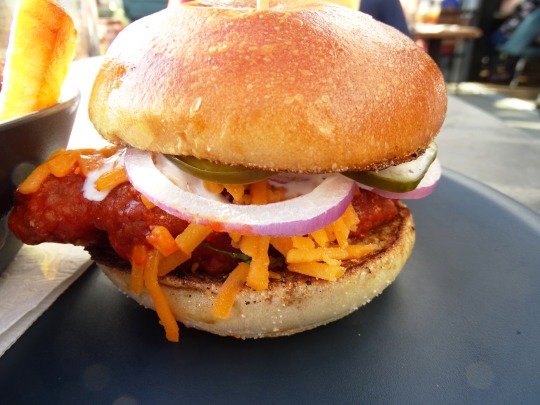
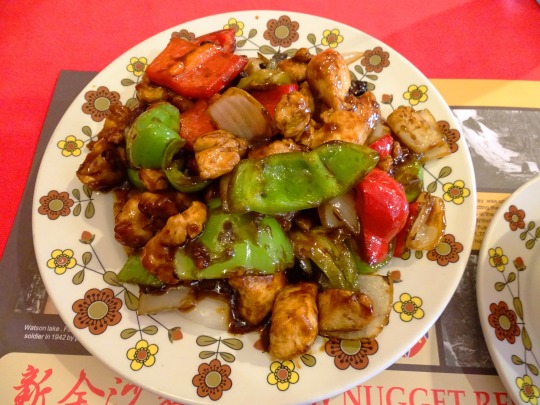


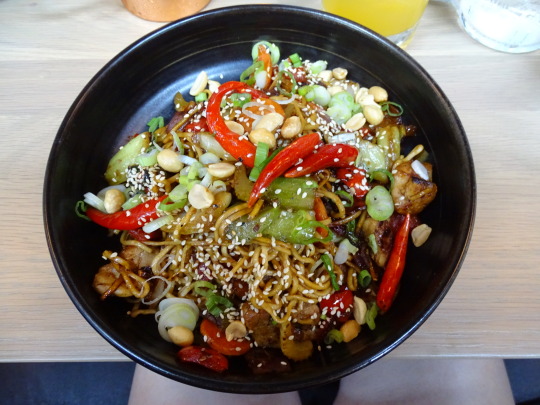
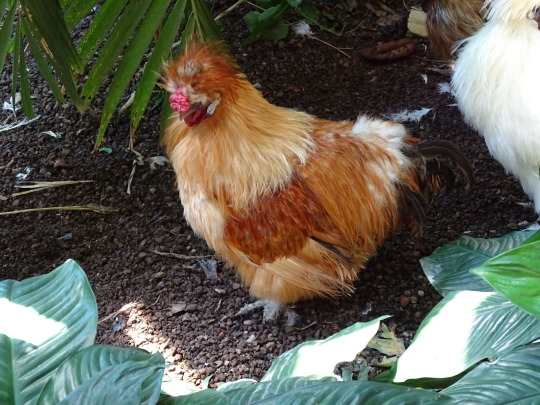

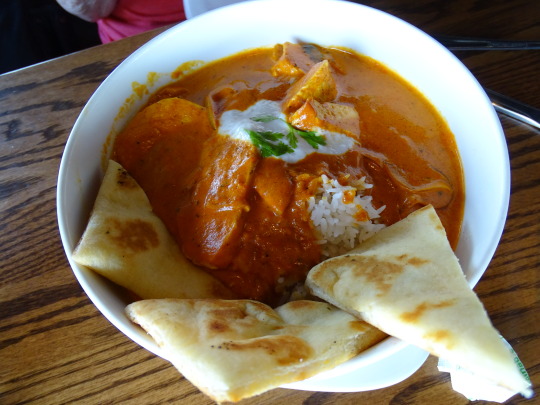

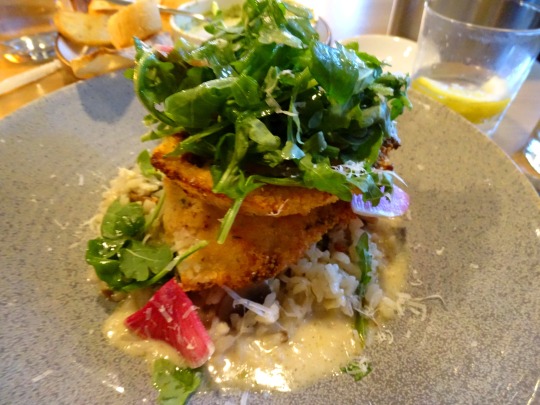


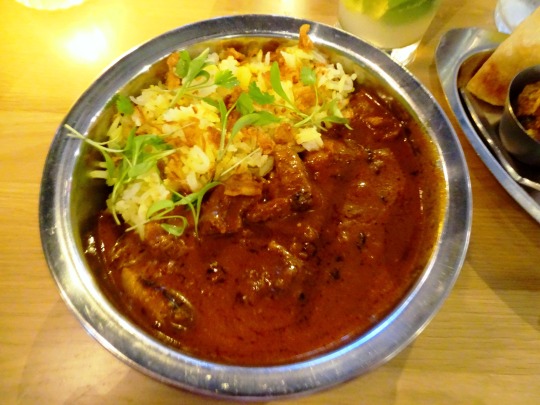
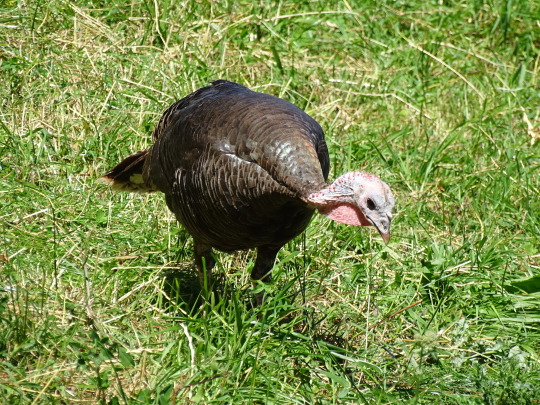

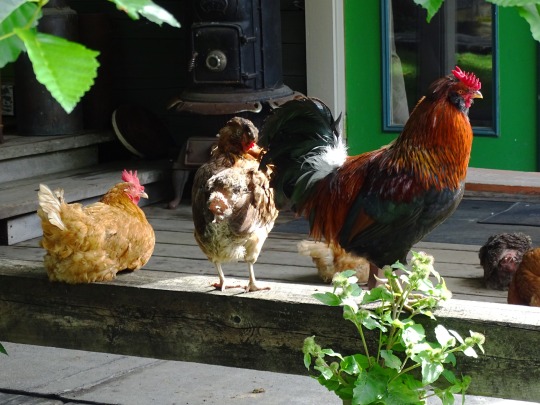


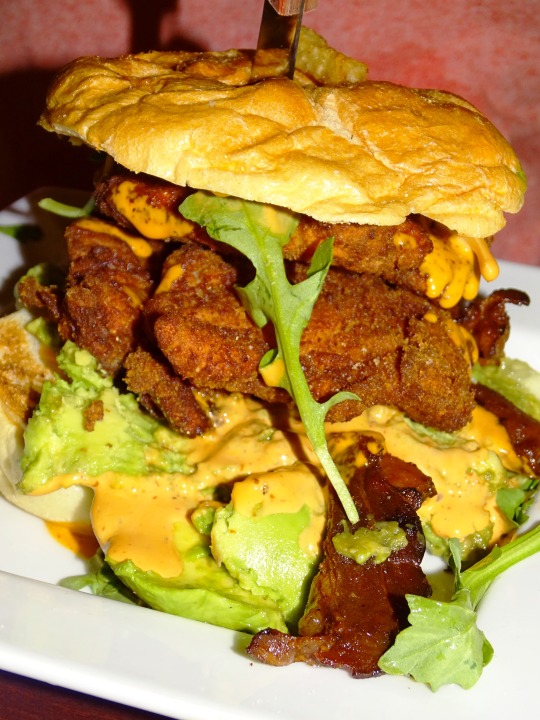
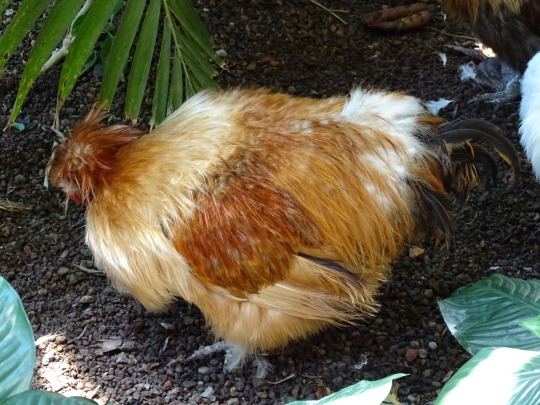
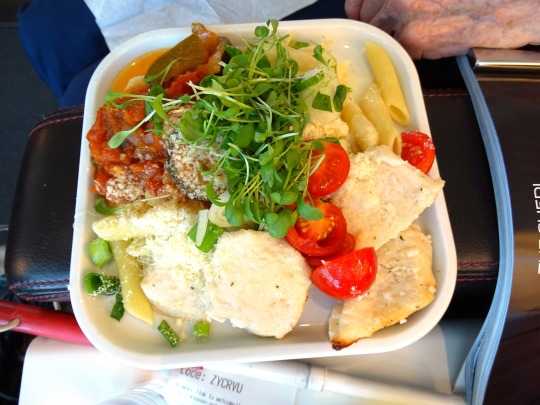
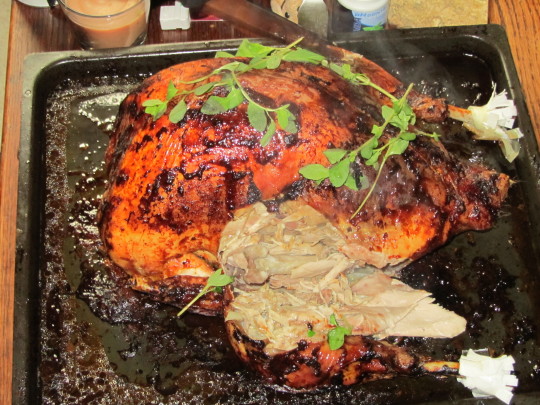
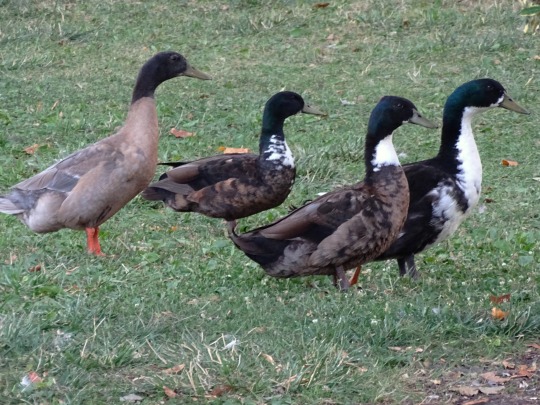

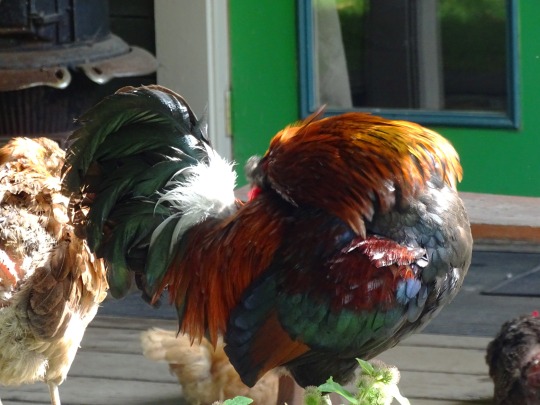



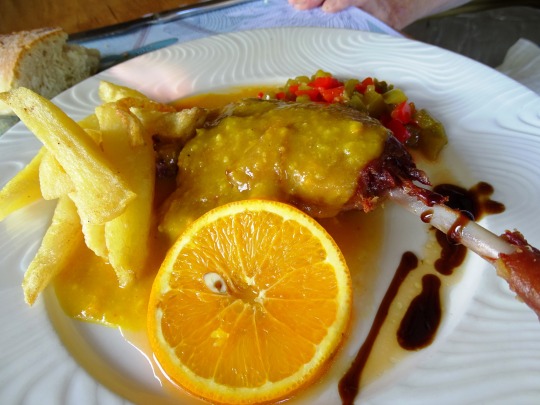

National Poultry Day
We suspected fowl play when we first discovered March 19 is annual National Poultry Day when we celebrate our national love affair with poultry. We scrambled to figure out how to celebrate poultry without bias because we are biased; chickens rule the roost when it comes to poultry. We are just going to have to wing this one.
History of National Poultry Day
Chicken is the most widely consumed meat in America, with each of us estimated to eat a clucking 101 pounds per year. Chicken has become our favorite protein because it is affordable (should we say “cheep-er”?) readily available, easy to cook, and versatile. But chickens were not always prized for how well they pair with an endless variety of seasonings, flavors, and cooking methods.
The word poultry is derived from the Latin word “pullus” which means “small animal.” Today we use the word poultry to describe domesticated birds kept for meat, eggs, and possibly feathers. But the first fowls intentionally raised by humans are believed to have been kept for their entertainment value, not for their spicy wings. Archeological evidence points to Southeast Asia and China as the first cultures to breed chickens for the sport of cockfighting as early as 10,000 years ago. Artistic depictions of roosters engaged in combat are found throughout the ruins of many ancient cultures.
Until recently the earliest evidence of large-scale chicken-eating was in first century B.C. Europe. But researchers have unearthed what may be evidence of chickens being domesticated for food at least 100 years earlier in an ancient Israeli city. We may never know when or how someone first tasted chicken roasted over a fire, but obviously that first barbequed chicken was not the last.
Outside the fighting rings and amphitheaters of ancient Rome, Greece, China, and Asia, chickens have held status as divinity in human societies for millennia. Chickens have been worshipped in many parts of the world because of their fighting prowess and are still considered to hold magical powers of divination in remote cultures.
Although some people around the world still engage in cockfighting legally and illegally, the world’s oldest continual sport has been illegal in all fifty of the United States since 2008. That makes us feel good because we think cockfighting is inhumane, plus our fine feathered friend the chicken is now a superstar in the scientific arena. The chicken was the first domesticated animal and first bird to have its genome completely mapped by geneticists in 2004. It turns out that the chicken is the first descendant of dinosaurs. Who knew? We wonder if a cockfight between two prehistoric roostasaurusrex would have been considered fowl play or pure poultry in motion. We are just glad modern chickens are pullus – small animals.
On National Poultry Day we celebrate chickens and other poultry not just for their culinary value, but for their other lesser-known contribution to mankind as pets. Chickens make wonderful pets, whether common laying hens or exotic heritage breeds that are as colorful as tropical fish and cost as much as $399 for a single day-old chick. Chickens make good mousers, some say better than cats, and will keep your vegetable garden fertilized and insect-free.
We realize that by winging it, we managed to duck the fact that poultry is more than just chickens. We will give it another crack and fry harder next year to include other fowl in our tribute on National Poultry Day.
National Poultry Day timeline
1992
More chicken, please!
American chicken consumption surpasses beef for the first time.
1928
Discovery of Vitamin D
Vitamin D supplements increase the winter survival rate of flocks, revolutionizing the chicken meat and egg industries.
1923
Chickens gain industry status
The first confined housing of birds for meat in Delaware and the introduction of cage systems for hens in California became catalysts for poultry farming’s shift from small family enterprise to the industrial age.
1800s
Chickens raised only on family farms
Chicken meat was a delicacy and eggs were considered a luxury until the 1900s because flocks failed to thrive due to poor nutrition and Vitamin D deficiency during winter months due to lack of sunlight.
National Poultry Day FAQs
What is considered poultry?
“Poultry” is generally defined as domesticated birds raised for the production of meat, eggs and can include feathers. The word “poultry” also refers to the flesh of these birds when used as food. Most people think of chicken or turkey when they hear the word poultry, but geese, ducks, squab (young pigeons) pheasant, quail, guinea fowl, and ostrich are also poultry.
What are the personality characteristics of poultry?
All poultry are social animals who enjoy being with other birds and thus should never be kept alone in captivity. They have a clearly defined hierarchy, or pecking order, within their community with strong territorial instincts. Poultry will nest in the same spot every night to go to sleep if given the option.
When is National Poultry Day?
March 19
How to Celebrate National Poultry Day
Try a bird of a different feather: Pheasant, duck, quail, goose, and game hens are all poultry not often found on American dinner plates but popular in other cultures. If these are too exotic for your taste at least treat your palate to a capon. A capon is a rooster that is castrated before sexual maturity. The lack of testosterone and a special diet produces exceptionally tender, juicy, and flavorful meat that is superb compared to regular hens. Capons were considered a luxury and the poultry of choice for holiday feasting among wealthy families during the early nineteenth century. Capons are not easy to find these days, but once you taste this bird, you will never again say anything else “tastes like chicken.”
Roast a Turducken: If you are undecided which poultry to serve for dinner on National Poultry Day, go with a Turducken. Turducken is a deboned chicken stuffed into a deboned duck that is stuffed into a deboned turkey, then roasted for pretty much a full day. The famous Cajun chef Paul Prudhomme trademarked the name Turducken in 1986, although the practice of “engastration” (the cooking term for stuffing one animal with another) dates back to at least the Middle Ages.
Purchase farm-fresh eggs: If you do not have your own backyard flock of laying hens, take a drive outside the city limits to a local co-op or family farm and purchase a dozen farm-fresh eggs. Once you taste the difference between freshly laid eggs and supermarket eggs, you will never want to buy store-bought again.
5 Ways Poultry Feathers Have Been Recycled
Quill pens: Before modern pens were invented, feather quills were trimmed at a slant with a razor and dipped in ink for use as writing instruments.
Fire tinder: Bird feathers are very flammable when dry and can be used as tinder to get a campfire going quickly with just a small spark.
Fishing lures: The decorative plumage of birds has been used by fly fishermen and women for years to tie the perfect lure for landing prized trophy fish like mackerel, bass, and trout.
Goose down bedding: Goose down is soft, fluffy and warm, and has become the most desirable stuffing for extremely comfortable – and expensive – pillows and comforters.
Decorative paper: Since 1993 feathers have been used to make exquisite decorative papers.
Why We Love National Poultry Day
Chickens make great pets: If you are not a meat-eater, the next best thing about chickens is they make surprisingly good pets. Chickens are social creatures that love to strut around to see what the rest of the flock is up to. They enjoy being held and can even be taught a few tricks provided there is a delicious mealworm reward involved. Chickens are relatively inexpensive and easy to care for compared to other domestic pets but need at least two or three other birds around to be well-adjusted. If your community does not discriminate against poultry as pets, and you have room for a spacious coop, laying hens will pay for their upkeep in daily fresh eggs.
For beauty’s sake: Hens take special notice of the rooster with a colorful, nice-looking, healthy comb strutting his stuff around the barnyard. A healthy crown and wattle are indeed very good for the rooster looking to score in the barnyard. A stunning comb and wattle are good for us, too, because chicken combs, especially rooster combs, are an excellent source of Hyaluronic acid, or H/A, a naturally occurring body fluid that lubricates and cushions bone joints and plumps up skin cells. H/A has been used for decades to relieve arthritis joint pain and stimulate healing of athletic injuries. H/A has been injected into the knees of professional and collegiate athletes and racehorses for years as a bio-lubricant that allows bones to move easier. Hyaluronic Acid can also be taken orally as a supplement and is a sought-after ingredient in top-shelf cosmetics and natural skincare products.
Chicken jokes: Chicken jokes are a childhood tradition, a quirky rite of passage discovered sometime between kindergarten and first grade. We are not sure why other poultry have not been singled out as the subject of silly jokes and puns. Maybe chickens do not get their feathers ruffled as easily as other poultry over fowl jokes. We egg-spect it has something to do with a chicken being in just about every pot in America, or at least on the grill or in the oven.
Source
#National Poultry Day#NationalPoultryDay#19 March#food#restaurant#original photography#chicken#travel#Zoo Zürich#day trip#animal#summer vacation#Silkie#Louisiana Chicken Pasta#Fried Chicken Sandwich#Canada Goose#homemade stuffed turkey#Brahma chicken#Chicken Tostadas#vacation#USA#Canada#tourist attraction#Duck a l'Orange#Pomeranian duck
2 notes
·
View notes
Text
Simon Williams for Time:
It’s hard to believe it's been five years since the start of the COVID-19 pandemic. Since 2020, the disease has killed more than 1.2 million Americans—more than in any other country. That accounts for more than 1 in 7 reported COVID-19 deaths in the whole world (although the true global death toll is likely much higher due to under-reporting). Don’t be fooled by some social-media revisionist historians who would have us believe that COVID-19 was “mild”—it was one of the most lethal infectious disease outbreaks in human history, ranking only behind the 1918 Spanish Flu and the Bubonic Plague (not including the ongoing HIV/AIDS epidemic). Advertisement Thankfully, in 2025, the days of lockdowns and quarantines now seem a distant memory for many—even though the physical, mental, and emotional impacts of the pandemic persist in many ways. However, the question remains: Are we better prepared for next time? Sadly, if anything, we are less prepared than before.
Pandemics are not necessarily once-in-a-lifetime events. We already saw in 2009 a swine flu pandemic that killed up to half a million people globally. H5N1 bird flu continues to spread in poultry, wild birds, and mammals in the U.S., with each case increasing the risk of further spillover into humans—making the U.S. a possible epicenter of any new flu pandemic, should the virus evolve further to spread easily among humans. MPox, MERS (another coronavirus with a high fatality rate), and Ebola are just some of the currently circulating pathogens with pandemic potential. And, of course, "Disease X" (a potential virus that could emerge in the future that we don't yet know about) is always a possibility.
What should we be doing that we’re not? First, we should be making investments, not cuts, in pandemic preparedness. The U.S. has withdrawn funding from the World Health Organization. Working alongside local and national health authorities, the WHO is a key “first responder,” identifying and containing infectious-disease outbreaks before they spread. The U.S. contributed approximately $120 million in 2023-2024 on responding to acute health emergencies and to preventing pandemics and epidemics, so our step back leaves a massive hole in resources designed to tackle emergencies and stop outbreaks from spreading. Also, recent funding cuts or freezes to agencies like USAID are already having ramifications on the ground, with public-health professionals concerned that progress in tackling diseases like tuberculosis will stall or regress. With less funding, pandemic preparations also slow down, and the U.S. ceasing negotiations for the Pandemic Agreement and amendments to the International Health Regulations makes matters worse.
5 years ago this week, COVID mitigation measures started to be implemented in various aspects of our lives.
On March 11th, 2020, the World Health Organization (WHO) officially declared COVID-19 a pandemic. On that same evening, multiple COVID-related news items broke out, including the positive COVID test of Tom Hanks, the NBA suspending its season due to Rudy Gobert’s positive COVID test, and Donald Trump announcing a travel ban from EU countries.
47 notes
·
View notes
Text
Also preserved in our archive
Won't someone think of the egg prices!
By John Lindt
KERN COUNTY – The price of eggs is often used as a barometer for the economy, but this fall’s high prices are not the work of market factors, but rather migratory flights.
Avian flu is spreading along the path of birds’ southern migration for winter across California. As of Nov. 12, the U.S. Department of Agriculture (USDA) reported that a large egg ranch in Kern County has been impacted by bird flu resulting in the destruction of 2.15 million egg layers. This is the first case of HPAI in Kern County during the 2022-24 bird flu outbreak as it spread south heading into winter. Kern County is home to some of the state’s largest egg ranch operations.
The same day USDA also announced that avian flu hit two Fresno County poultry ranches, one a broiler ranch resulting in the killing of 237,700 chickens being prepped for meat and a turkey ranch requiring the destruction of 34,800 toms, or male turkeys. The news follows recent reports about avian flu spreading to Kings County poultry ranches resulting in the loss of over half a million birds and at another Fresno ranch. On Nov. 14, USDA added three more poultry ranches to the list of affected including one in Merced County, a turkey ranch with the loss of 53,200 birds and another one in Fresno County.
The locations of the poultry ranches are not far from the Pacific flyway, a major migratory route in the Western United States. In the case of Kern County, the egg ranch was close to the Kern Wildlife Refuge as well as nearby dairies. This is worrying observers that there appears to be a connection between all three vectors for the rapidly mutating virus.
Northern California poultry operations have been hard hit as well. Nationwide, outbreaks have claimed more than 21 million hens, so far in 2024.
Egg Prices In California the impact on egg prices has been significant.
On Nov. 13, the USDA reported that a dozen large, white cage-free eggs cost about $5.26 per dozen in California. This is according to USDA market data for the week of Nov. 8. USDA says this is a “benchmark” price. The price is up from $2.81 a month earlier. That is almost double the benchmark, but may not reflect retail.
The last time California eggs were this high was in February when California egg prices – cage-free egg prices – peaked at $5.59 per dozen.
The cases of infected birds correspond with fall bird migrations that are spreading the virus throughout the state. Detections are higher in fall and spring as wild birds spread the virus when they migrate. This year the bird flu has taken its toll with the outbreak of H5N1, a highly transmissible and fatal strain of avian influenza, or bird flu. The outbreak started in early 2022 and rapidly grew into the largest bird flu outbreak in U.S. history.
Most recently, outbreaks affecting more than 2.84 million egg layers were reported in October at commercial facilities in Oregon, Washington and Utah, according to the Centers for Disease Control and Prevention (CDC).
As of Nov. 8, the virus has affected over 105.2 million birds in the U.S. since January 2022, according to the CDC. The California egg shortage will likely have a pocketbook impact on holiday baking activity as the nation prepares for Thanksgiving; however, a recent USDA analysis suggests consumers may not see a huge jump.
“Large volume grocery retailers across the nation have launched their shell egg feature campaigns targeting holiday demand at relatively attractive price levels. Much of this is attributable to changes in the way shell eggs are being marketed with an increasing share (estimated at over half of all shell egg volume sold at retail) tied to production cost agreements not prone to fluctuation common in formula trading.”
There are about 378.5 million egg-laying chickens in the US. As of last year, there were 9.4 billion broiler chickens and 218 million turkeys processed, according to the USDA. Advocates note the high cost of the influenza just in the egg market. “With domestic sales of shell eggs and products amounting to seven billion dozen, consumers paid an incremental $15 billion as a result of the prolonged and uncontrolled infection.”
While bird flu is impacting poultry farms, another strain of the virus has impacted Central Valley dairies as well, spreading quickly since September to 291 dairy farms as of press time. Unlike poultry, dairy cows typically survive the virus, although milk production is expected to be impacted.
Avian flu is a worldwide phenomenon. In the past two weeks, the first cases of highly pathogenic avian influenza (HPAI) of the fall season have been reported in Albania, Great Britain, Romania, and now regions of Germany and Ukraine.
Despite the increase in US egg prices this holiday season, turkey prices are down from last year when supply was also affected by bird flu. Across the country, a 15-pound turkey costs an average of $31.16 ($2.08 per pound) in 2024, compared with $35.40 ($2.36 per pound) in 2023. That price reduction represents a price decrease of 12% from last year to now,” a report said. The lower price comes even as a U.S. Department of Agriculture report showed turkey production dipped more than 6% compared to this time last year.
Hen and Hoof The spread of this strain of the virus appears to be affecting both the Central Valley poultry and dairy industries at the same time.
Just before Sept. 1 there were no reports of the virus in the Valley’s dairy industry. But as of Nov. 15, there are almost 300 diaries, mostly in Tulare and Kings Counties, impacted with new ones being added every day.
The Valley poultry industry has been on a similar viral timeline which coincides with the annual bird migration along the Pacific flyway that happens each fall. H5N1 largely infects wild birds, with waterfowl such as ducks and geese being the natural reservoirs for H5N1 viruses. Most H5N1 viruses are highly pathogenic avian influenza, meaning spillovers into other bird populations can lead to high mortality rates, including domesticated poultry.
A compounding factor for the spread of the virus is that both livestock are often on land located right next door or just down the road. The Central Valley is home for both industries with animals, transported in and out, and service vehicles going in and out of these large facilities every day.
The industry website Egg-News this week pointed out that research shows that the infections can be transmitted over a distance of up to a mile while attached to dust particles. Fall is harvest for a number of crops, including the nut industry, sending up plumes of dust in the Valley sky, at times associated with winds.
Egg-News points out that dairy cow-associated H5N1 viruses have jumped back into wild birds, and recent outbreaks in domestic poultry resembled H5N1 in dairy cows.
In an editorial Egg-News said “APHIS Needs a New Approach to Control HPAIr.” They recommend that USDA’s Animal and Plant Health Inspection Service (APHIS) adopt vaccination as a disease control strategy for bird flu, with promising results from clinical trials. In May 2023, the U.S. authorized the vaccination of California condors against a type of avian flu.
Also, the USDA has approved field trials to test vaccines that could prevent dairy cows from getting the H5N1 strain of bird flu. The USDA approved the first field trials for the vaccine in September 2024. The USDA’s Center of Veterinary Biologics (CVB) is overseeing the trials. At least 24 companies are working on the vaccine, including Zoetis and Merck Animal Health.
If vaccines can save the U.S. poultry and dairy industry over the next year, the industry may have to worry about who heads up the U.S. Department of Health and Human Services (HHS), the agency which authorizes vaccines for animals and humans. Nominee Robert F. Kennedy, Jr. has made it clear he is anti-vaccine but has yet to comment on the use of vaccines in agriculture if he is confirmed for the role.
34 notes
·
View notes
Text

Roasted Pheasant | Bake It With Love
0 notes
Text
2025 update:
February 2024 witch guide
Full moon: February 24th
New moon: February 9th
Sabbats: Imbolc-February 1st
February Snow Moon
Known as: Eagle Moon, Horning Moon, Solmonath Moon, Bear moon, Ice Moon, Wild Moon, Raccoon Moon, Big Winter Moon, Groundhog Moon, Quickening Moon, Storm Moon, Goose Moon, Hungry Moon & Red/Cleansing Moon
Element: Fire
Zodiac: Aquarius & Pisces
Nature spirits: House Faeries
Deities: Aphrodite, Brigid & Nut
Animals: Otter & Unicorn
Birds: Chickadee & Eagle
Trees: Cedar, laurel, myrtle & rowan
Herbs: Balm of Gilead, hyssop, myrrh, sage & spikenard
Flowers: Primrose
Scents: Heliotrope & wisteria
Stones: Amethyst, jasper, moonstone, obsidian, onyx , rose quartz, topaz & red zircon
Colors: Light blue & violet
Energy: Astral travel, banishing, beginnings, breaking bad habits, creativity expressiveness, empowerment, energy working to the surface, fertility, forgiveness, freedom, friendships, future plans, growth, healing, problem solving, purification, responsibility & science
February’s full Moon is a “Micromoon” this year. Think of this term as the opposite of a “Supermoon.” It simply means that the full Moon is at its farthest point from Earth (not the nearest point).
The explanation behind February’s full Moon name is a fairly straightforward one: it’s known as the Snow Moon due to the typically heavy snowfall that occurs in February. On average, February is the United States’ snowiest month, according to data from the National Weather Service. In the 1760s, Captain Jonathan Carver, who had visited with the Naudowessie(Dakota), wrote that the name used for this period was the Snow Moon, “because more snow commonly falls during this month than any other in the winter.”
Imbolc
Known as: Feast of Torches, Feast of Waxing Light, Oimele & Brigid's Day
Season: Winter
Symbols: Besoms, Brighid's crosses, candles, candle wheels, fertility symbols, fire, ploughs, priapic wands & white flowers
Colors: Black, brown, Earth tones, lavender, light green, orange, pink, red, white & yellow
Oils/Incense: Apricot, basil, bay, carnation, chamomile, cinnamon, dragon's blood, frankincense, heather, jasmine, myrrh, neroli, red sandalwood, sage, vanilla, violet & wisteria
Animals: Badger, cow, deer,groudhog, robin, sheep, snake, & swan
Mythical: Dragon
Stones: Amethyst, bloodstone, citrine, clear quartz, garnet, green tourmaline, hematite, iron, lodestone, onyx, red zircon, rose quartz, ruby, turquoise, yellow tourmaline
Food: Breads, chives, curries, dairy products, grains, garlic, herbal teas, honey cakes, lamb, muffins, onions, peppers, poppy seed cakes, pork, poultry, pumpkin seeds, raisins, scones, spiced wines & sunflower seeeds
Herbs/Plants: Angelica, ashleaf, balsam, basil, bay laurel, benzoin, blackberry, clover, coltsfoot, coriander, dragon's blood, garlic, heather, lemon, myrrh, rosemary, sage, vervain, wheat & witch hazel
Flowers: Celandine, chamomile, iris, rose hips, snowdrop, sunflower, tansy, violets, white flowers & yellow flowers
Goddesses: Anu, Aradia, Arianrhod, Artio, Athena, Branwen, Brigid, Danu, Februa, Gaia, Inanna, Juno, Selene, Sirona & Vesta
Gods: Aegus Mac Og, Bragi, Cupid, Dian Cecht, Dumuzi, Eros, Februus & Pax
Issues, Intentions & Powers: Activation/awakening, animals, beginnings, fertility, healing, hope, illumination, inspiration, light, pregnancy/childbirth, prophecy, transformation, well-being & youth
Spellwork: Air magick, banishings, candle spells, divination, fertility spells, prosperity & purification
Activities:
• Make & light white candles
• Clean/decorate your altar & consecrate your altar tools
• Go on a walk in nature & look for signs of spring
• Make a Brigid's Cross
• Have a feast with your family/friends
• Give thanks & leave offerings to the Earth
• Set intentions, reflect & look deeper into your goals for spring
• Start a bonfire
• Find Imboloc prayers & devotionals that bid farewell to the winter months, honor the goddess Brigid, as well as seasonal blessings for your meals, hearth, & home.
• Pepare plans for your upcoming garden
• Craft a priapic wand
• Spend time with children celebrating Imbolc by making crafts & or baking
• Practice divination & fire scrying
• Draw a cleansing ritual bath for yourself
• Meditate, reflect & say your farewells to winter
• Cleanse & clean your house to prepare for spring
• Create a Brídeóg: a doll of Brigid made of straw
• Make Bride's bouquet satchets & exchange as symbols of good luck and fertility
• Set aside food & or drinks as an offering to Brigid to invite her in your home
Imbolc is a Gaelic festival marking the beginning of spring. Most commonly it is held on January 31 – February 1, or halfway between the winter solstice & the spring equinox. The holiday is a festival of the hearth, home, a celebration of the lengthening days & the early signs of spring.
The word "imbolc" means "in the belly" and refers to the pregnancy of ewes at this time of year. The term "oimelc" means ewe's milk. Around this time of year, many herd animals give birth to their first offspring of the year or are heavily pregnant & as a result, they are producing milk. This creation of life’s milk is a part of the symbolic hope for spring.
Imbolc is mentioned in some of the earliest Irish literature and it is associated with important events in Irish mythology. It has been suggested that it was originally a pagan festival associated with the goddess Brigid and that it was Christianized as a festival of Saint Brigid, who herself is thought to be a Christianization of the goddess.
Some use Imbolc to celebrate the longer days which herald the return of Spring & The Goddess's recovery from giving birth to The Sun (The God) at Yule. The God & The Goddess are children symbolizing new life, new beginnings & new resurrections.
Related festivals:
• Groundhog Day- Is a tradition observed in the United States & Canada on February 2 of every year. It derives from the Pennsylvania Dutch superstition that if a groundhog emerges from its burrow on this day & sees its shadow, it will retreat to its den & winter will go on for six more weeks; if it does not see its shadow, spring will arrive early.
While the tradition remains popular in the 21st century, studies have found no consistent association between a groundhog seeing its shadow & the subsequent arrival time of spring-like weather.
•St. Brigid's Day- 1 February. It was originally Imbolc, the first day of spring in Irish tradition. Because Saint Brigid has been theorised as linked to the goddess Brigid, some associate the festival of Imbolc with the goddess. St. Brigid is the patroness saint (or 'mother saint') of Ireland. She is patroness of many things, including poetry, learning, healing, protection, blacksmithing, livestock & dairy production. In her honour, a perpetual fire was kept burning at Kildare for centuries.
A recent campaign successfully established her feast day as a national holiday in 2023.
• Chinese New Year- (February 10th) the festival that celebrates the beginning of a new year on the traditional lunisolar Chinese calendar. In Chinese, the festival is commonly referred to as the Spring Festival,- marking the end of winter and the beginning of the spring season. Observances traditionally take place from Chinese New Year's Eve, the evening preceding the first day of the year, to the Lantern Festival, held on the 15th day of the year. The first day of Chinese New Year begins on the new moon that appears between January 21st & February 20th.
The Chinese New Year is associated with several myths and customs. The festival was traditionally a time to honour deities as well as ancestors. Within China, regional customs and traditions concerning the celebration of the New Year vary widely & the evening preceding the New Year's Day is frequently regarded as an occasion for Chinese families to gather for the annual reunion dinner.
It is also a tradition for every family to thoroughly clean their house, in order to sweep away any ill fortune & to make way for incoming good luck. Another custom is the decoration of windows & doors with red paper-cuts and couplets. Popular themes among these paper-cuts and couplets include good fortune or happiness, wealth & longevity. Other activities include lighting firecrackers & giving money in red envelopes.
• Candlemas- is a Christian feast day on February 2nd commemorating the presentation of Jesus at the Temple. It is based upon the account of the presentation of Jesus in Luke 2:22-40.
While it is customary for Christians in some countries to remove their Christmas decorations on Twelfth Night, those in other Christian countries historically remove them after Candlemas.On Candlemas, many Christians also take their candles to their local church, where they are blessed and then used for the rest of the year.
•Setsubun- (February 3rd) Is the day before the beginning of spring in the old calendar in Japan. The name literally means 'seasonal division', referring to the day just before the first day of spring.
Both Setsubun & Risshun are celebrated yearly as part of the Spring Festival (Haru matsuri ) in Japan. In its association with the Lunar New Year, Setsubun, though not the official New Year, was thought of as similar in its ritual & cultural associations of 'cleansing' the previous year as the beginning of the new season of spring. Setsubun was accompanied by a number of rituals & traditions held at various levels to drive away the previous year's bad fortunes & evil spirits for the year to come.
Other Celebrations:
• Lupercalia-
In ancient Rome, this festival was conducted annually on February 13th through 15th under the superintendence of a corporation of priests called Luperci. The origins of the festival are obscure, although the likely derivation of its name from lupus (Latin: “wolf”) has variously suggested connection with an ancient deity who protected herds from wolves and with the legendary she-wolf who nursed Romulus and Remus. As a fertility rite, the festival is also associated with the god Faunus.
to purify the city, promoting health & fertility.
Each Lupercalia began with the sacrifice by the Luperci of goats and a dog, after which two of the Luperci were led to the altar, their foreheads were touched with a bloody knife & the blood was wiped off with wool dipped in milk; the ritual required that the two young men laugh. The sacrificial feast followed, after which the Luperci cut thongs from the skins of the sacrificial animals & ran in two bands around the Palatine hill, striking with the thongs at any woman who came near them. A blow from the thong was supposed to render a woman fertile.
In 494 CE the Christian church under Pope Gelasius I forbade participation in the festival. Tradition holds that he appropriated the form of the rite as the Feast of the Purification (Candlemas), celebrated on February 2, but it is likely that the Christian feast was established in the previous century. It has also been alternately suggested that Pope Gelasius I replaced Lupercalia with St. Valentine’s Day, celebrated on February 14th, but the origin of that holiday was likely much later.
Sources:
Farmersalmanac .com
Llewellyn's Complete Book of Correspondences by Sandra Kines
Wikipedia
A Witch's Book of Correspondences by Viktorija Briggs
Encyclopedia britannica
Llewellyn 2024 magical almanac Practical magic for everyday living
#witchblr#wiccablr#paganblr#witchcraft#witch guide#February 2024#snow moon#Imbolc#witch community#witches of tumblr#tumblr witches#correspondences#grimoire#book of shadows#spellbook#traditional witchcraft#spellwork#witch tips#witch tumblr#beginner witch#baby witch#witchcore#Lupercalia#full moon#moon magic#GreenWitchcrafts#pagan#wicca#witch#witchy things
312 notes
·
View notes